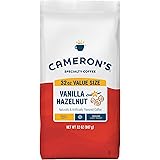Mastering Advanced Latte Art Techniques for Professional Pours
Achieving refined latte art fundamentally relies on a solid technical foundation. This guide expands on practical insights from the accompanying video, offering detailed strategies for baristas and enthusiasts. Precision in every step is paramount for consistent, beautiful results. These advanced latte art techniques are designed to elevate your craft.
The Foundational Role of Technique in Latte Art
Robust pouring technique is the cornerstone of exceptional latte art. Minor adjustments often yield significant improvements in design symmetry and contrast. Consistent practice refines muscle memory and hand-eye coordination. This disciplined approach minimizes inconsistencies in the final pour.
The intricate details of contrast, placement, and overall aesthetic are refined through repetitive application. A comprehensive understanding of fluid dynamics is implicitly developed. Therefore, focus on fundamental mechanics before attempting complex designs.
Optimizing Your Equipment for Superior Latte Art
The choice of vessel significantly impacts latte art outcomes. An 8-ounce cup is often preferred for enhanced contrast and depth. Smaller volumes of milk dilute the espresso less, intensifying the visual pop of white on crema. This yields a more striking differentiation of colors.
Furthermore, selecting the appropriate pitcher is critical. The spout design influences the milk stream’s precision and flow. Pitcher volume should match the intended drink size to optimize the “angle of attack.” Proper equipment setup supports consistent latte art production.
Precision Cup and Pitcher Handling for Symmetrical Designs
Correct cup holding is essential, prioritizing both hygiene and stability. Fingers should avoid the cup rim, preventing contamination. A secure grip from the handle or base ensures a steady platform for pouring.
Pitcher alignment is equally crucial for latte art symmetry. The pitcher’s handle should align with the spout, forming an imaginary perpendicular axis in the cup. Maintaining this alignment throughout the pour prevents lopsided designs. This seemingly awkward wrist position is necessary for centered patterns.
This disciplined alignment ensures the pattern develops evenly across the espresso surface. Deviation during the pour directly affects the aesthetic balance. Continuous awareness of hand and pitcher orientation is thus required.
Understanding the Mechanics of Latte Art Pouring
The “angle of attack” refers to the pitcher’s tilt relative to the cup’s surface. A greater tilt allows the spout to approach the liquid surface more closely. This proximity is vital for achieving sharp, defined latte art patterns with strong contrast.
An optimal amount of milk in the pitcher facilitates this critical angle. Excess milk restricts the tilt, preventing close surface interaction. Conversely, too little milk leads to a less stable pour. Achieving the correct milk volume maximizes control during intricate pours.
Achieving Optimal Contrast and Integration
Initial pouring from a slightly higher position ensures milk-espresso integration. This critical step creates a homogenous base for latte art. Proper integration prevents lumpy pours and ensures a smooth canvas. A consistent milk texture, or microfoam, is paramount.
Milk quality directly affects microfoam stability and pour characteristics. Whole milk generally yields the best results due to its fat content. Non-fat or 2% milk can produce coarser, less stable foam, leading to undesirable textures in the final art. The ideal microfoam should be glossy, velvety, and free of large bubbles.
As the pour progresses, decreasing the height and increasing proximity to the surface introduces the white microfoam. This creates the stark color differentiation known as contrast. Optimal contrast highlights the intricate details of the latte art design. Maintaining a steady, controlled flow is key to achieving crisp lines.
Minimizing Milk Waste in Latte Art Practice
Efficient milk usage is a professional imperative, especially in commercial settings. Consistently steaming the precise amount of milk needed reduces operational costs. This practice also aligns with sustainability efforts within the coffee industry.
Reheating previously steamed milk is generally discouraged. The heating process alters milk proteins, leading to compromised taste and texture. Freshly steamed milk consistently produces superior microfoam. Therefore, mastering portion control is essential for quality and economy.
Practicing with water in both the cup and pitcher is an excellent method to refine mechanics. This allows for repetition without milk waste. The muscle memory developed with water translates directly to milk pouring. It is an invaluable exercise for perfecting awkward wrist positions and steady flows.
Advanced Strategies for Perfecting Latte Art
Transitioning from water to milk requires adapting to different fluid dynamics. The viscosity and density of milk impact pour speed and pattern formation. Attention to milk temperature and texture prior to pouring is non-negotiable. Consistent microfoam is critical for successful latte art.
Equipment such as a high-quality grinder and espresso machine also influence the outcome. A perfectly extracted espresso shot provides the ideal crema base. The Rocket Espresso Appartamento, paired with a Eureka Zenith 65E grinder, exemplifies professional-grade setups. Each component contributes to the overall beverage quality and latte art potential.
Pitcher transfer, while often debated for hygiene, can optimize the “angle of attack” in certain scenarios. Pre-heating the transfer pitcher prevents temperature loss in the milk. Swirling the milk before transfer ensures even distribution of foam. This proactive approach supports seamless latte art execution.
Troubleshooting common issues often reveals fundamental technique flaws. Lopsided patterns typically indicate inconsistent pitcher alignment during the pour. Chunky milk or uneven foam distribution suggests inadequate swirling or steaming. Consistent self-assessment and targeted practice are the most effective remedies for improving latte art skills.







